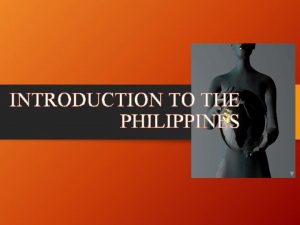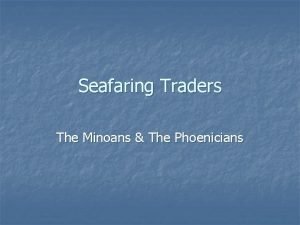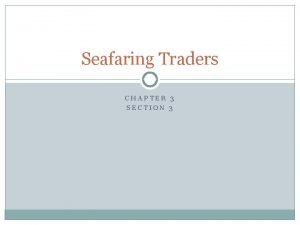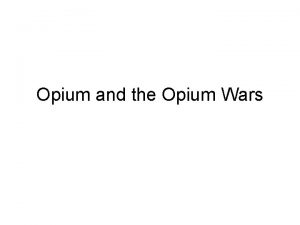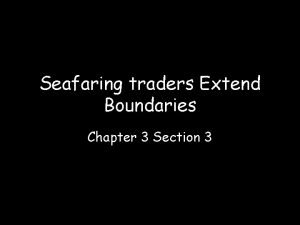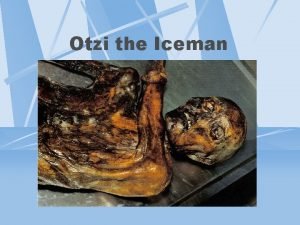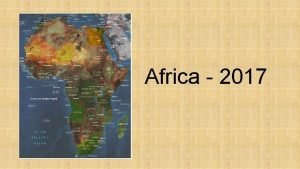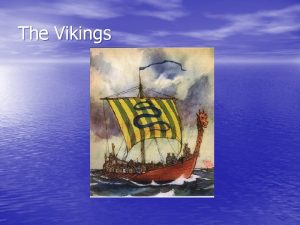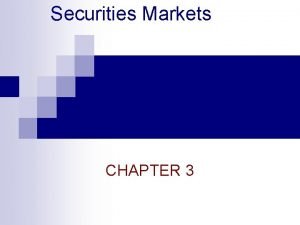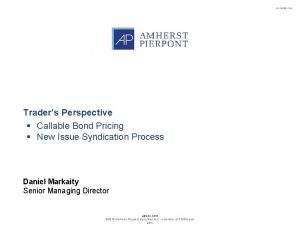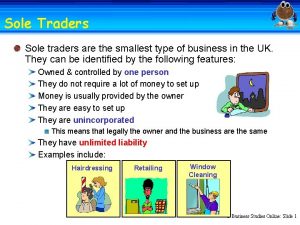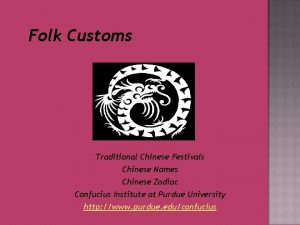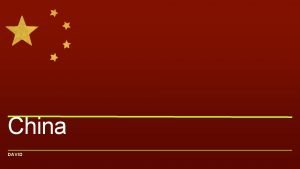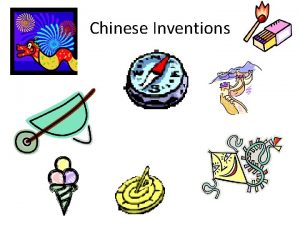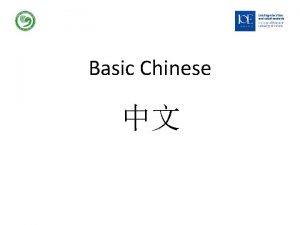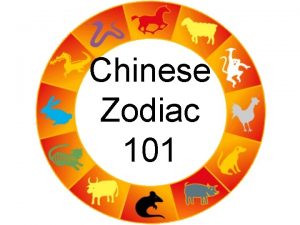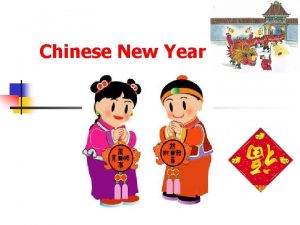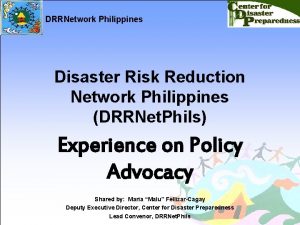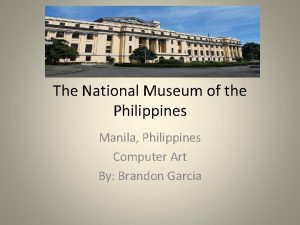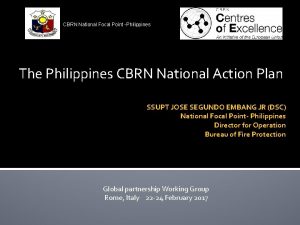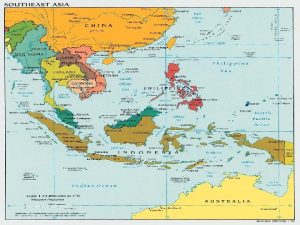INTRODUCTION TO THE PHILIPPINES Early Chinese traders who




















- Slides: 20

INTRODUCTION TO THE PHILIPPINES

• Early Chinese traders who visited Mindoro called our nation “Ma -yi”. This means land of gold, because they bought gold in Mindoro. • A Greek map maker named Claudius Ptolemy (90 -168 A. D. ) called our islands “Maniolas” in his ancient map. • When Magellan came in 1521 he called the Philippines “Archipelago of St. Lazarus”. But the name did not become popular. • In 1543, a Spanish Explorer named Ruy Lopez de Villalobos gave the name “Felipinas” to the Philippines Phil. In honor of Crown Prince Felipe(Philip) who later became King Philip II of Spain.

• The “Felipinas” later became “Filipinas” during the Spanish colonial era. Then it became “the Philippine Islands” during the American colonial era. Then “the Republic of the Philippines. • Then “the Republic of the Philippines” after our independence in 1946. https: //giphy. com/gifs/philippinesg 9 XHq. CDKBr 3 Lq

-the most popular nickname for the Philippines. This was the romantic name given to our country by two Famous writers. One of them was a Spanish missionaryhistorian named Fr. Juan J. Delgado in 1751. But the Filipino who popularized this name was Dr. Jose Rizal, our National Hero. https: //giphy. com/gifs/welcome-tennesseepearls-r. Xsia 4 yaqq 47 K

https: //www. gov. ph/philippine-government

• The Philippines is a republic with a presidential form of government wherein power is equally divided among its three branches: executive, legislative, and judicial. • One basic corollary in a presidential system of government is the principle of separation of powers wherein legislation belongs to Congress, execution to the Executive, and settlement of legal controversies to the Judiciary.

https: //www. gov. ph/philippine-government

• Located in the continent of Asia, Philippines covers 298, 170 square kilometers of land 1, 830 square kilometers of water, making it the 73 rd largest nation in the world with a total area of 300, 000 square kilometers. https: //giphy. com/gifs/tech-app-Hz. Mf. JIk. TZgx 8 s

• The Philippines lies in Southeast Asia, a little above the Equator, between latitudes 4° 23’N and longitude 116°E and 127°E. • The map shown the Philippine Territorial sea and Exclusive Economic Zone.

https: //www. google. com. ph/search? q=philippine+eez&rlz=1 C 1 CHMO_tl. PH 776&tbm=isch&source=iu&ictx=1&fir=Tqw. Ta. Gz 5 OCMIHM%253 A%252 Cue. OT 7 pp 4 e. Hz. JCM%252 C_&usg=__x-ymy 0 PFDBv. PSQh. FREUbml. EHk. E%3 D&sa=X&ved=0 ah. UKEwi. Lj 8 Lvvt. Xa. Ah. VJjp. QKHX 1_Cq. EQ 9 QEIQz. AC#imgdii=JJZo. Ss. XNjc. YF 1 M: &imgrc=Tqw. Ta. Gz 5 OCMIH M:

The Climate of the Philippines is tropical and maritime. It is characterized by relatively high temperature, high humidity and abundant rainfall. It is similar in many respects to the climate of the countries of Central America. Temperature, humidity, and rainfall, which are discussed hereunder, are the most important elements of the country's weather and climate. https: //giphy. com/gifs/philippinestyphoon-hagupit-6356 D 6 z 8 HUdxu

• Composing approximately of 7, 107 islands, the Philippines is broken down into three (3) major island groups: • 1) Luzon 2) Visayas 3) Mindanao • Then each island group is divided into regions and there are more than seventeen (17) different Philippine regions. • Luzon has eight (8) regions. Visayas has three (3) regions. Mindanao has six (6) regions. https: //giphy. com/gifs/philippineslac. HNv. JW 6 Vpv 2

§ The 11 main islands and their areas are § (104, 687 sq. km. ); (94, 630 sq. km. ); (13, 080 sq. km. ); (12, 709 sq. km. ); (11, 785 sq. km. ); (11, 515 sq. km. ); (9, 735 ssq. km. ); (7, 214 sq. km. ); (4, 422)sq. km. ); (3, 864 sq. km. ); and (3, 269 sq. km. ) https: //giphy. com/gifs/philippine s-o. Ll. Wn. Wm. Ro. GU 0 g

I. LUZON Ilocos Region Cagayan Valley Central Luzon Calabarzon Mimaropa Bicol Region Cordillera Administrative Region (CAR) National Capital Region (NCR) II. VISAYAS Western Visayas Central Visayas Eastern Visayas III. MINDANAO Zamboanga Peninsula Northern Mindanao Davao Region SOCCSKSARGEN Caraga Autonomous Region of Muslim Mindanao (ARMM)

üTopography means the physical features of country. The Philippines is an inverted Y-shaped archipelago of numerous islands, and islets, coral reefs, abundant rivers, lakes and bays; mountains and valleys; cool plateaus and scenic volcanoes. üIt has the longest discontinuous coastline in the world 34, 600 kilometer. It has 61 natural harbors and 20 landlocked straits.

• 106, 223, 390 • The population of the Philippines has been steadily growing for many years. It is the 12 th most populated country in the world, between Mexico and Ethiopia, and grew at a rate of 1. 72% between 2010 and 2015. The 2018 population is 106. 51 million, according to the latest UN estimates. • Based on 2015 census data, the population in 2016 in the Philippines was 100, 981, 437. Based on the 2015 census results, the population increased by over 8 million people when compared to the 2010 census results. The growth rate has slowed slightly from the previous census, down to 1. 72% from 1. 89%. https: //giphy. com/gifs/filipino. UPb. VZUKh. UNk 9 G

• Unsurprisingly for a country that is made up of many islands, the Philippines contains a diverse range of ethnic groups. The latest data available comes from the 2000 census, which reported the following breakdown: • Tagalog, 28. 1% • Cebuano, 13. 1% • Ilocano, 9% • Bisaya, 7. 6% • Hiligaynon, 7. 5% • Bikol, 6% • Waray, 3. 4% • Other, 25. 3% https: //www. google. com. ph/search? q=filipino+people&rlz=1 C 1 CHMO_tl. PH 776&source=lnms&tbm=isch&sa=X&ved=0 ah. UKEwjzx. Y 3 ax 9 Xa. Ah. XIf. Lw. KHXG 7 BWIQ_AUICig. B&biw=1440&bih=745#imgrc=b 3 hz. WTFj. X 0 Fz. AM:

• Religion in the Philippines is heavily influenced by its history as a part of the Spanish Empire. As well as naming the country after its King (Philip II), Spain also exported its religion, and today around 81% of the country's citizens are Roman Catholic Christians. Of the remaining people, 11% are from other Christian denominations and around 5. 6% are Muslim, mainly based in the southwest area of the country. https: //giphy. com/gifs/religion. Sp. Np. T 6 Diex. Jw. Q

• The national language of the Philippines is Filipino – that's according to the 1987 Constitution, particularly Article XIV, Section 6. • The Philippines has 8 major dialects. Listed in the figure from top to bottom: Bikol, Cebuano, Hiligaynon (Ilonggo), Ilocano, Kapampangan, Pangasinan, Tagalog, and Waray. The language being taught all over the Philippines is Tagalog and English.

• REFERENCES: • https: //www. slideshare. net/sicachi/origin-and-geography-ofthe-philippines • https: //www. worldatlas. com/as/ph/where-is-thephilippines. html • https: //www 1. pagasa. dost. gov. ph/index. php/27 -climatologyand-agrometeorology • https: //www. gov. ph/philippine-government • http: //www. philippines-travel-guide. com/philippineregions. html • http: //worldpopulationreview. com/countries/philippinespopulation/ • https: //www. justlanded. com/english/Philippines. Guide/Language-in-the-Philippines
 Early chinese traders who visited mindoro called our nation
Early chinese traders who visited mindoro called our nation Anglo chinese school chinese name
Anglo chinese school chinese name Early cpr and early defibrillation can: *
Early cpr and early defibrillation can: * Famous sole traders
Famous sole traders Seafaring traders
Seafaring traders Northwind traders
Northwind traders Seafaring traders chapter 3 section 3
Seafaring traders chapter 3 section 3 Cohong monopoly
Cohong monopoly Utilitarian traders
Utilitarian traders Seafaring traders
Seafaring traders Iceman national geographic
Iceman national geographic Value traders
Value traders The bantu capital city in zimbabwe was called _____.
The bantu capital city in zimbabwe was called _____. Options futures and risk management
Options futures and risk management Sylvia traders lounge
Sylvia traders lounge Vikings and africa
Vikings and africa Old economy traders opened an account
Old economy traders opened an account George caleb bingham fur traders descending the missouri
George caleb bingham fur traders descending the missouri Private limited company advantages and disadvantages gcse
Private limited company advantages and disadvantages gcse Dm traders
Dm traders Mohist mechanism
Mohist mechanism
